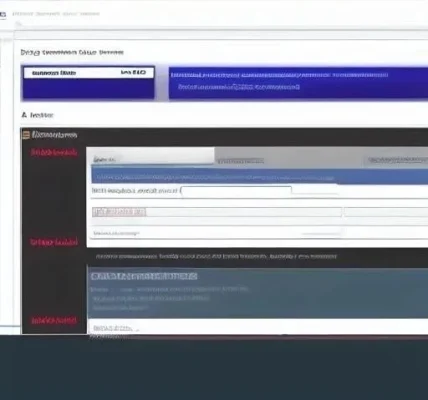Key Performance Indicators (KPIs) are crucial for measuring the success of your e-commerce business. They provide insights into various aspects of your operations, from marketing effectiveness to customer satisfaction. Choosing the right KPIs is essential. It allows you to track progress and make informed decisions.
Without KPIs, you’re flying blind. You need to know what’s working and what’s not.
Essential E-commerce KPIs to Track
Several KPIs are vital for monitoring your e-commerce performance. Let’s explore some of the most important ones. Each offers a unique perspective on your business health.
Conversion Rate
The conversion rate measures the percentage of website visitors who make a purchase. A higher conversion rate indicates a more effective website and marketing strategy. It’s a key indicator of how well you’re turning traffic into sales.
Average Order Value (AOV)
AOV represents the average amount spent per order. Increasing AOV can significantly boost revenue. Consider strategies like upselling and cross-selling.
Customer Acquisition Cost (CAC)
CAC is the cost of acquiring a new customer. Lowering CAC improves profitability. Optimize your marketing campaigns to reduce acquisition costs.
Customer Lifetime Value (CLTV)
CLTV predicts the total revenue a customer will generate throughout their relationship with your business. Focus on customer retention to maximize CLTV. Happy customers are repeat customers.
Bounce Rate
Bounce rate is the percentage of visitors who leave your website after viewing only one page. A high bounce rate may indicate poor website design or irrelevant content. Improve user experience to reduce bounce rate.
Tip: Regularly analyze your website analytics to identify areas for improvement. Small changes can have a big impact on your KPIs.
Website Traffic
Tracking website traffic is essential to understand how many people are visiting your online store. More traffic generally leads to more sales opportunities. Focus on driving relevant traffic to your site.
- Organic Traffic
- Paid Traffic
- Referral Traffic
- Direct Traffic
How to Improve Your E-commerce KPIs
Improving your KPIs requires a strategic approach. Here are some actionable steps you can take.
- Optimize Website Design: Ensure your website is user-friendly and visually appealing.
- Improve Product Descriptions: Write compelling and informative product descriptions.
- Offer Competitive Pricing: Research your competitors’ prices and adjust accordingly.
- Provide Excellent Customer Service: Respond promptly to customer inquiries and resolve issues efficiently.
- Run Targeted Marketing Campaigns: Focus your marketing efforts on reaching your ideal customers.
Interesting Fact: Mobile commerce is rapidly growing. Make sure your website is optimized for mobile devices.
FAQ Section
What is a good conversion rate for e-commerce?
A good conversion rate typically falls between 2% and 5%. However, this can vary depending on your industry and target audience. It’s important to benchmark against your own historical data and industry averages.
How often should I track my KPIs?
You should track your KPIs regularly, ideally on a weekly or monthly basis. This allows you to identify trends and make timely adjustments to your strategies. Consistent monitoring is key to success.
What tools can I use to track my e-commerce KPIs?
Several tools are available for tracking e-commerce KPIs, including Google Analytics, Adobe Analytics, and various e-commerce platform dashboards. Choose the tools that best fit your needs and budget. Data-driven decisions are the best decisions.
Why is customer retention important?
Customer retention is crucial because it’s generally more cost-effective to retain existing customers than to acquire new ones. Loyal customers also tend to spend more and are more likely to recommend your business to others. Focus on building strong customer relationships.
The Role of Technology in KPI Tracking
Technology plays a vital role in effectively tracking and analyzing e-commerce KPIs. Automation and data visualization tools can streamline the process, providing real-time insights and facilitating data-driven decision-making.
Data Collection
Automated data collection systems can gather information from various sources, including website analytics, sales platforms, and marketing tools. This ensures accurate and comprehensive data for KPI analysis.
Data Visualization
Data visualization tools, such as dashboards and charts, present complex data in an easily understandable format. This allows businesses to quickly identify trends, patterns, and areas for improvement.
Reporting and Analysis
Automated reporting tools can generate regular reports on key KPIs, providing insights into performance trends and highlighting areas that require attention. This enables businesses to make informed decisions and optimize their strategies.
Tip: Invest in robust data analytics tools to gain a deeper understanding of your e-commerce performance. The insights you gain will be invaluable.
A/B Testing
A/B testing platforms allow you to experiment with different website elements, marketing messages, and pricing strategies to determine what works best for your target audience. This data-driven approach can significantly improve your KPIs.
Future Trends in E-commerce KPI Measurement
The landscape of e-commerce is constantly evolving, and so are the methods for measuring performance. Here are some emerging trends in KPI measurement to watch out for.
- Personalized KPIs: Tailoring KPIs to individual customer segments for more targeted insights.
- Predictive Analytics: Using data to forecast future performance and identify potential opportunities.
- AI-Powered Insights: Leveraging artificial intelligence to automate KPI analysis and generate actionable recommendations.
- Omnichannel Measurement: Tracking KPIs across all sales channels to gain a holistic view of customer behavior.
Important Consideration: Data privacy is paramount. Ensure you are compliant with all relevant regulations when collecting and analyzing customer data.
By staying informed about these trends and adapting your KPI measurement strategies accordingly, you can ensure that your e-commerce business remains competitive and successful.

